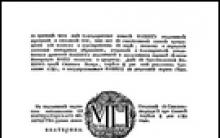Anyone who speaks in front of an audience needs to learn speaking technique, have clear diction and a pleasant voice. There are many problems associated with speech and voice that prevent the speaker from feeling confident, but also disrupt the communication process and create an unpleasant attitude towards the speaker. It may be monotonous or fast pace
speech, squeaky or quiet voice, impaired pronunciation technique.
Voice artists are the hardest working actors you'll ever see. The demands placed on a vocal actor can be extreme, and without proper care and exercise, the voice will undoubtedly suffer. Mark Kassman is not only one of the busiest actors and producers behind the scenes; he also instructs students of all levels in Los Angeles as well as online through his teleconning program.
Taking care of your sinuses is also high on his list. Keep your sinuses clear, says Cashman. A decongestant spray or tablet will work for a short time, but it can also dry out your mouth. Saline solution may also help. Kassman found that some actors' vocal quality improved after the surgery: I have met many people, including myself, who have had this procedure and have completely changed their voices.
Fortunately, there are many exercises for speech technique and voice production that can be performed both in special stage speech courses or acting courses, and at home using a self-instruction manual. We invite you to familiarize yourself with the most common and effective of them.
The main thing is to talk and practice more in front of listeners, taking advantage of every opportunity. It gave me so much more depth and resonance. Physical exercise are also important for your voice to work well. All voiceovers capture breathing and breath control, which is why cardiovascular exercise is so important, he says, the better your fitness, the more you easy ability
and greater control over your breathing. Kassman finds fitness vital when doing more demanding sessions: People who are overweight and don't exercise will have a difficult time.
At the end of a phrase or sentence they will freeze. Long passages are especially difficult to hold onto, and they may not be able to capture long-term work like audiobooks. Kassman often refers students to lessons with a voice coach or singing teacher. "What actors' voices learn very quickly is how much music there is in the copy," he says. Some of my most successful voice acting students are singers because of all the skill sets they bring to the table. Their sense of intonation, articulation, interpretation, microphone technique, breath control and innate knowledge of music makes them keenly aware of these qualities in the copy.
Breathe! Don't breathe!
legs, you should control your breathing and strive to position it correctly. Staging your voice and speech is impossible without breathing exercises.
To pronounce an entire sentence or a large fragment in one breath, you should learn to draw a large volume of air into your lungs, then, if necessary, either retain it or use it sparingly. The breathing apparatus is easy to train with regular exercise.
Don't talk to your mouth. Food and drink can be treacherous for a voice actor. There is also another potential problem. Don't eat a heavy meal before a session, he says, because you'll just be tired and your throat will be filled with food detritus.
If you eat heavy food, rinse your mouth, teeth, and clean your mouth completely. Smoking is another disadvantage that, surprisingly, affects some voice-over musicians. "It should be no problem, but there are voice actors who feel that smoking gives their voice character, this edge or split," Cashman says. I argue that actors who don't smoke can always cut or fray in their voice, but a smoker can't stand it. Besides the vocal questions, you steal the control room and the stand.
During an actor's pause, the speaker must again draw in sufficient air until the next logical pause. Voluntary breathing makes reading the text unemotional and illogical. You should also not overdo it or make strange sounds while inhaling, taking in air, and exhaling. The breathing process should be done in such a way that it is as silent as possible and air is collected in a short time.
If you must smoke, wait until the session is over. Being considerate of your fellow actors' voices is also important. "Don't show up to an audition or session cold," he warns. It's selfish. If you miss an audition, it's like a bus: another one will always come. If you know it will affect your work, you need to bow.
Cashman has a series of exercises to strengthen his voice, as well as actor's diction and clarity. Hold your upper and lower teeth gently and pass through the row of tongue tendons, forcing the lips to do the work, he said. Another exercise he recommends is putting a wine stopper halfway into your mouth, and then trying to read the copy as clearly as possible. “The clearer you are with the cork,” he says, “the better off you will be without it.”
Effective exercises for voice and speech production
 Exercise "Candle" This will allow you to breathe evenly as you exhale. To do this, bring a strip of paper measuring 15*4 closer to your mouth by 5-7 cm. We fold our lips into a tube and blow on the paper so that its angle is the same throughout the entire exhalation. Avoid paper shaking or sudden deviations. Maintain slight tension in the intercostal muscles and diaphragm.
Exercise "Candle" This will allow you to breathe evenly as you exhale. To do this, bring a strip of paper measuring 15*4 closer to your mouth by 5-7 cm. We fold our lips into a tube and blow on the paper so that its angle is the same throughout the entire exhalation. Avoid paper shaking or sudden deviations. Maintain slight tension in the intercostal muscles and diaphragm.
It will take you 15 to 30 minutes to get to Los Angeles so you can use it, he says. Singing in a comfortable range will stretch your vocal cords. By the time you get to the session, you'll be where you need to be vocally. You'll be warmed up, focused and ready to go. Warming up is an important part of choral singing. Just like in sports, the voice is a muscle that needs to be stretched and "warmed up" before active use, but warm-ups also provide an opportunity to focus at the beginning of rehearsal and focus on breath support, tone production and resonance. Choir warm-ups are a great way to prepare new ones music concepts, support vocal development and promote the development of individual and collective music.
Exercise “Punctured Ball” allows you to exhale smoothly and at the same pace. Imagine puncturing the ball and imitate the “ssssss” sound. Wrap your arms around your chest on the sides and press on the “ball,” releasing the air without tension. The hands should move towards each other and encounter slight resistance. The air comes out slowly and smoothly to the sound of “sssss”.
"Warm-ups are where you teach your choir how to sing." - Josh Pedd, Indianapolis Children's Choir. Begin your warm-up by stretching, relaxing your body, and focusing. Consider doing this sequence while listening to your favorite recording. Feel free to mix up your order and add your own moves!
At the end of the movement portion of the warm-up, remind singers to “stand tall.” Exhale first, then inhale a new, fresh breath. If singers raise their shoulders when breathing, remind them to breathe deeply and low. Make it quick but deep full breath. Can they do it quietly? - Breathe in 4 beats and hiss like a snake until all the air disappears. - Inhale for 4 beats, hold for 4 beats and pulse on w for 8 beats. Try pulsing at 12 and 16 beats if they can do it!
Exercise "Painter" is performed as follows: move your hands as if you were painting window frames “Up and down, up and down...”. Hands are relaxed, movements are free and easy. We say short words “and up, and down, and up, and down.” Then the movements become more confident, sweeping, no longer from the hand, but from the elbow, the words are larger, the voice is higher. Then we work from the shoulder. The vowels become wider, the voice becomes higher and lower. Remember: in speech it is important to raise and lower your voice, which indicates the speaker’s self-control and his excellent command of the vocal cords.
Start humming and chewing to loosen your jaw. Ask a volunteer to draw a form for singing practice! Here are some ideas for vocal exploration. Start in the middle of the register and go up, then down. Mix it up with the varying dynamics, speed and range of the siren.
Why We Sound Wrong: Three Key Reasons
Move from vocal exploration to tone production with clean, rounded vowels. Here are some warm-up patterns that encourage beautiful tone production and high, rounded vowels. Ark - Descending scale with 5 notes. Encourage the connection between breathing exercises and tone production by incorporating several warm-ups that focus on energy and proper breath support.
To improve diction pronounce tongue twisters not only with vowels, but also with plosive consonants. Speech technique and voice production are not complete without exercises in front of a mirror for voice production and correct articulation.
Choose your timbre of speech with an acting and vocal teacher, take care of your throat, watch how your tongue moves during voice exercises. Expand your range and vocal capabilities while singing to your favorite music.
Finish off your warm-ups with something a little silly and fun that gets them thinking about diction and clear consonants. Here are some exercises for practicing words and dictation. Use the piano as little as possible. Kodaly suggested that the piano could interfere with the choir's ability to tune, and Alice Parker defended apel singing throughout her career. If you're using the piano to guide warm-ups up or down the scale, exit when the choir sings, then return to transition to a new key.
Sing lots of descending patterns. So much of the music children hear today is performed in the chest. Encourage children to use their clear, head-turning voice, singing in descending patterns that begin and carry the voice.
The wisest people of all times attached great importance to:
Hazrat Inayat Khan, an Indian musician and philosopher, believed that by knowing the secret of sound, one can know.
In my opinion, the voice is an even more revealing mirror of the soul than the eyes. The eyes can be averted to the side, hidden behind dark glasses, and the voice, if not mastered, will tell about all the problems of the individual: it will reflect the inner reality of a person in all its colors. Eg:
Don't start too low. Add hand movements. Hand movements are a great way to retain young performers; encourage high, round vowels and deep, low breaths; and add energy to your voice. Despite this, they are not part of the content ecosystem we talk about a lot, and there is a surprising sense of complacency about voice, tone and style.
Why you need a leadership voice, tone and style
Don't have a set of guidelines, all have guidelines that are not fit for purpose, have guidelines that are ignored on the shared drive. It's easy to assume that brand voice comes naturally. And it may well do that if you have a small central team creating content who all have intimate brand experience, think alike and never leave the business.
- You raise your voice unnecessarily - it means you are worried and losing control of yourself;
- The pace of speech accelerates - uncertainty;
- You interrupt and try to answer without listening to the end of the question - you are irritated.
But if we own this powerful tool, then with its help we can harmonize our inner world(gain confidence and calmness), which means creating our reality.
If that's not your situation, you need a voice, a tone, and a style guide. Strengthen and differentiate your brand through the consistent use of a well-crafted voice, promote consistency of content across teams, channels and formats, make it easier to work with agencies and freelancers, providing them with guidelines for creating content on brand, ensuring that you create content that is sensitive and resonates with your audience, gives you a benchmark to judge content against or refer to an argument about whether it is correct or not. The benefits aren't just in the quality of your content; they can also be financial.
After all, the voice is ours business card. Special exercises for voice training , will teach you to speak beautifully, confidently and freely. Your opinion will always be listened to, and you will never hear addressed to you: “It would be better if he didn’t open his mouth.”
Do you really need to work on your voice?
- Reading with a pencil.
We hold a pencil or wine cork between the front teeth. In this case, the mouth is slightly open, the tongue does not touch the cork (pencil), the teeth are exposed. We pronounce those sounds, when pronouncing which the lips do not engage in movement: k, g, g, k', y, n, n, l, l, d, d. Next, we connect them with vowels.
Difference between voice, tone and style
Having a guide makes it more likely that you'll get rights to content with fewer drafts, which has an obvious cost benefit. Referring to "voice, tone and style guide" may seem a little awkward compared to the more common "style guide" or "tone voice guide".
Structuring your voice, tone, and style guide
Voice is a description of your brand's unique, distinctive voice. . There are many in various ways get closer to your voice structure, tone, and style guide. Start by telling people what the manual is for, how it will make their job easier, and how to use it. Give a set of simple, memorable statements that capture your brand's voice. These statements should cover the qualities of your voice, the adjectives you will use to describe it, its rhythm, and a list of things that are not there. Tone - Show people how to use this voice with different tones. Explain the types of tones that people should use in different scenarios and give examples. At this point, it's good to talk about user empathy, and refer to any people you have. Specialist's language. Include sections in whatever specialist language your brand or organization needs to use. Introduction. . For each individual rule or statement you make in your manual, provide an example.
We take any book and read aloud several pages in this uncomfortable position. Must be repeated daily. The positive effect is noticed quickly.
- K T P (six different combinations) + vowel sounds Y O E I A U.
For example: we repeat quickly kpti-kpte-ktpo-ktpa-ktpo-ktpu-ktpy, then ktpi-ktpe-ktpa-ktpo-ktpu-ktpy and so on, combining with different vowels (ktpi-..., kpti-..., tpki-..., birds-...).
We perform the same actions for the consonants B G D, ZH R L, M R L in combination with the vowel sounds Y O E I A U.
- Write down those sounds that are difficult for you to pronounce(for example, p, c, l). Make up sentences with words in which these sounds are repeated often. Repeat these suggestions daily.
- Pronounce the vowels first silently and then loudly:eeeeeeeeeeeeeeeeeeeeeeeeeeeeeeeeeeeeeeeeeeeeeeeeeeeee The mouth should be open wide, the jaw should drop down freely.
- Read your favorite poems, pronouncing and emphasizing the sounds of yayayayay, aaaaa, iiiiii, eeeeee, yoyoyoyo.
- Pronounce tongue twisters: first - slowly, then - quickly, clearly and rhythmically:
The common duck has raised the young birds.
The Ligurian traffic controller was regulating in Liguria.
The redstart-redtail burned the redtails.
The Avocet has embroidered the Avocets.
And I have no time for feeling unwell.
Brit Klim-brother, Brit Gleb-brother, brother Ignat is bearded.
The pike tries in vain to pinch the bream.
He didn’t carry it, but he brought it to us.
The nervous constitutionalist was found acclimatized in Constantinople.
A heron is carrying a pig with a pike on a sled.
A big pile won't get boring.
Rhododendrons from the arboretum.
Now this, now that, now this, now that, then the woodpecker seems like an Egyptian god.
- Grandmother's method: put in mouth walnuts and talk and read aloud for about 20 minutes every day. Remember the film “I am the most charming and attractive” with Irina Muravyova in leading role. There she developed her speech in the same way. The main thing is that you need to pronounce the syllables clearly.
Lower jaw training
You should practice in front of a mirror; only the articulatory organs should participate in the exercises, and the forehead, nose and eyes should remain motionless. Do the exercises smoothly and slowly.
- We lower the lower jaw by two fingers and hold it in this position, counting to five. Close your mouth slowly.
- We lower the lower jaw and slowly move it left and right.
- We lower the lower jaw and slowly push it forward and return it to its original position.
We train the muscles of the tongue
A sedentary and sluggish tongue often leads to loss of speech intelligibility; it becomes slurred and slurred.
- Roll your tongue into a tube.
- Stick your tongue out of your mouth as far as possible and move it left, right, down and up.
- Lick everything inside your mouth with your tongue, as if cleaning, penetrating into the farthest corners.
- Click your tongue, pressing it firmly against the roof of your mouth and then sharply lowering it.
- Perform all these exercises efficiently, but without unnecessary stress.
Lip training
- In the initial position, the mouth is closed, the muscles of the lower jaw are relaxed. Alternately raise and lower the upper and lower lips, while the gums are not visible and the facial muscles are calm.
- Pull the corners of your mouth to the sides, and then stretch your lips forward with a tube. First imitate, then pronounce the sounds u – and.
- Repeatedly pronounce combinations of labial consonants bm, mb, mp, pm and labiodental mv, em, vb, bv, etc.
- Massage your lips: with your lower teeth on the upper one, and with your upper teeth on the lower one.
- Stretch your lips with a tube and move them left and right.
Pharynx muscle training
- First mentally, then in a whisper, then out loud, alternately pronounce the sounds “i” and “u”. Repeat at least 10-15 times.
This exercise develops the mobility of the larynx: when pronouncing the vowel sounds “i”, the larynx takes the highest position, and the phonation “u” lowers it to the lowest position.
- Teeth closed, suck in air.
- Lips extended forward, suck in air.
- Imitate chewing movements with your mouth open and closed - during the exercise the muscles of the larynx, soft palate, pharynx, lips and tongue contract vigorously.
Developing sonority and flight of voice
We train the upper resonators:
- While sitting or standing, take a short breath through your nose. At the same time, with your mouth closed and without tension, say “n” or “m” with a questioning intonation. Try to feel the vibration in the area of your upper lip and nose.
- Take a deep breath. As you exhale, say “bonn,” “donn,” or “bimm.” Pronounce the last consonant protractedly, achieve a feeling of vibration in the area of the upper lip and nose.
- Take a deep breath. While exhaling, pronounce the syllables “momm”, “mimm”, “ninn”, “nunn”, “nann”, etc.
- Take a deep breath. As you exhale, first pronounce briefly and then protractively any of the open syllables: mu-muu, mi-mii, mo-moo, no-noo, ni-nii, etc.
Training the lower resonators(pronounce the vowels “u” and “o” drawn out and as low as possible):
- While standing, place your hand on your chest. Yawn with your mouth closed, fixing your larynx in the lower position. While exhaling, say “u” or “o”, try to feel the vibration of the chest. If this does not work, vibration can be artificially caused by lightly tapping the sternum with your hand.
- While standing, place your hands on your chest. Leaning forward, exhale and pronounce the vowels “u” and “i” for a long time.
- Standing position, hands on chest. As you exhale, say “window,” “eye,” “tin,” “flour,” or “milk.”
To conclude this article, let me quote the words of Hazrat Inayat Khan:
He who controls himself is free.
Choice free man- unlimited.











How to properly and tasty cook pancakes with cottage cheese
Rose petal jam made by me
Buckwheat with pork ribs in a slow cooker Ribs with buckwheat in a slow cooker recipes
Chicken skewers Chicken skewers with bacon
Mushroom glade salad with honey mushrooms recipe with photos How to prepare mushroom glade salad with honey mushrooms